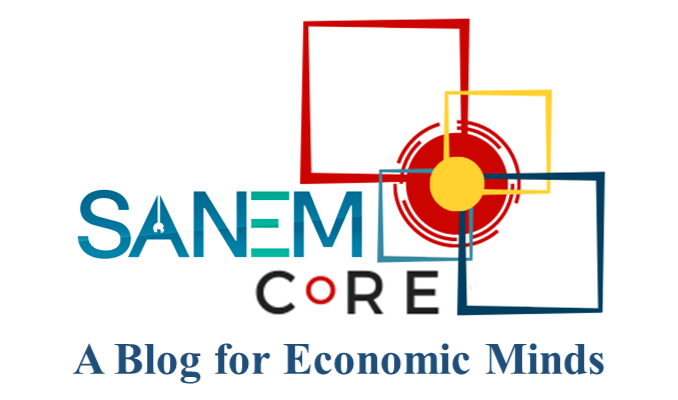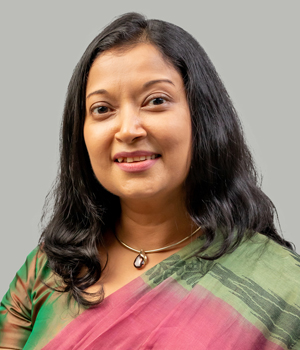Since the adoption of the 2030 Agenda, the government of Sri Lanka has taken various initiatives to implement Sustainable Development Goals (SDGs) and has made much progress in achieving several goals. Yet, the Covid-19 pandemic adversely affected several SDGs, particularly those related to poverty, inequality, employment, and health. Aggravating the prevailing conditions, in 2022, Sri Lanka was hit by the worst-ever economic crisis since its independence. It was caused by a combination of factors including a lack of foreign reserves, disruptions to the tourism industry, the decline in government revenue due to huge tax cuts in 2019, and rising crude oil prices. The economic crisis led to a series of negative consequences such as rising inflation, shortage of essential goods including medicine and fuel, and daily power cuts, affecting people’s lives and livelihoods and adversely impacting the progress of many SDGs.
Despite the multiple crises in recent years, the SDG Index for Sri Lanka shows an overall improvement in SDG performance since 2016. With an SDG Index of 69.4, Sri Lanka ranked 83 out of 166 countries in the world in 2023- ahead of many South Asian countries. However, the progress of many SDGs indicates major challenges to achieving them, including SDG 2 (zero hunger), SDG 5 (Gender), SDG 6 (water and sanitation), and SDGs 14-17, with some goals like SDG 1 on poverty indicating a reversal in progress in recent years.
Sri Lanka made much progress in poverty reduction over the decades, but the progress has reversed in recent years due to the pandemic and the economic crisis. The extreme poverty rate (measured by $2.15 a day) which was around 1% in 2019, increased slightly during the pandemic and then increased sharply to around 6% in 2022 due to the economic crisis. Similarly, the $3.65-a-day poverty rate has more than doubled from 11% in 2019 to over 25% indicating a reversal in the much-achieved progress in poverty reduction over the years. Income inequality also has increased in 2022 from its already high levels. The Gini coefficient for Sri Lanka was 39.8 in 2022 – the highest among the South Asian countries. These setbacks indicate significant challenges to achieving SDG 1 and SDG 10 by 2030.
As per the Sustainable Development Report 2023, Sri Lanka has already achieved SDG 4 on Education and some targets under SDG 3 including those related to mortality rates. For example, the maternal mortality ratio (MMR) for Sri Lanka was 28.8 per 100,000 live births in 2020 and Sri Lanka had met the target of reducing the MMR to less than 70 per 100,000 live births (SDG 3.1) more than three decades ago. Moreover, with an Under-5 child mortality rate of 6.7 and neonatal mortality of 3.9 per 1000 live births (in 2021), Sri Lanka had met the targets given in SDG 3.2 over 25 years ago. Additionally, life expectancy at birth in Sri Lanka is around 76– one of the highest in South Asia, while nearly 100% of births are attended by skilled health professionals. The early achievements in health and education indicators are primarily a result of Sri Lanka’s ‘Universal Free Health Policy’ and ‘Universal Free Education Policy’ implemented in the late 1940s coupled with heavy investments in education and health sectors several decades ago.
Yet, there are many challenges to achieving SDG 3. For example, the Universal Health Coverage Index for Sri Lanka is only 67. Although ahead of other South Asian countries, Sri Lanka has significant challenges in achieving the target considering the country’s declining government spending and increasing out-of-pocket expenditure on health. In addition, there are new challenges created by the economic crisis, such as a shortage of medical supplies and a shortage of health professionals due to increasing outmigration–which could affect the quality of health services and widen disparities, adversely affecting the achievement of SDG 3. Declining government spending on education (which is below 2% of GDP at present) is also a constraint to maintaining Sri Lanka’s early achievements in education such as school enrolments and literacy rates.
There are several challenges and impediments to achieving SDGs in Sri Lanka. These include financing SDGs, data deficits (lack of up-to-date and disaggregated data at regular intervals), policy inconsistency, and issues related to institutional capacities.
Financing SDGs has become the biggest challenge for Sri Lanka at present. On the domestic front, government expenses increased during the pandemic while revenues dropped, primarily due to tax cuts introduced in 2019. On the external front, foreign income earnings from tourism dropped sharply following the Easter Sunday Bomb Attack in 2019 and the pandemic, while remittances started to fall from 2021—which, however, started to show signs of improvement in 2023. Other inflows, such as FDI into the country, have also reduced post-COVID-19 as the economic uncertainties have mounted. Financing has become even tighter following Sri Lanka’s inability to access international bond markets after the selective default of foreign debt payments in April 2022. All these issues have widened the financing gap to achieve SDGs.
Mobilizing adequate resources for SDGs through traditional and non-traditional sources is key to SDG achievement. Regarding traditional financing, tax reforms are needed to improve tax revenue while ensuring that tax measures are progressive to address inequality. Attracting private investment including through private-public partnerships is also important. Moreover, measures are needed to improve exports, remittances, FDI, and earnings from tourism. In addition to traditional financing, the Roadmap for Sustainable Finance in Sri Lanka, developed by the Central Bank of Sri Lanka, highlights some non-traditional instruments in SDG financing such as green bonds and Environmental, Social, and Governance (ESG) bonds.
Enhancing global /regional partnerships to mobilize and share knowledge, expertise, technology, and financial resources is crucial to accelerate the progress and achievement of SDGs. South-South cooperation is also an avenue that needs to be further explored by Sri Lanka. Regional cooperation can also help accelerate the progress of several SDGs, in particular, SDGs related to hunger (SDG 2), health (SDG 3), energy (SDG 7), decent work (SDG 8), and climate action (SDG 13) (For a detailed analysis, refer to Tilakaratna, G., & Sooriyamudali, C. (2019). Interpreting SDGs for South Asia: In Search of a Regional Framework -The Case of Sri Lanka. Bangkok: UNESCAP-SSWA.). Further, partnerships including regional corporations can also help address data deficits through improved resources and capacity building.


RECENT COMMENTS